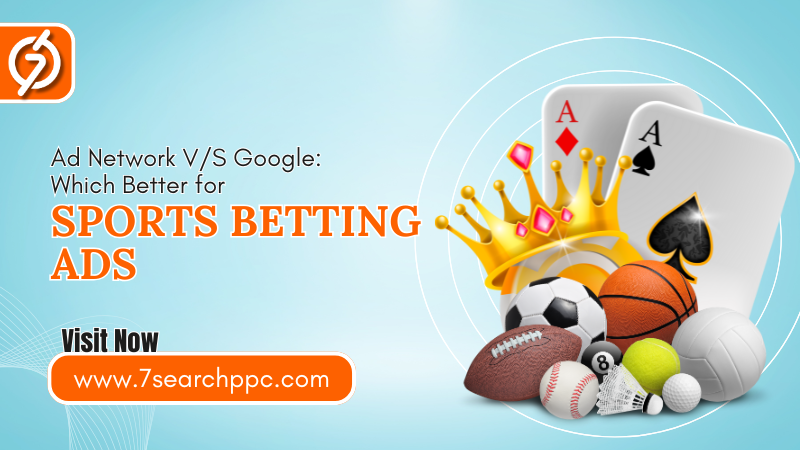In the last three years, digital ad spending for sports betting advertising has jumped nearly 70 percent worldwide. It’s no surprise — more bettors are moving online, and brands are fighting to stay visible ahead of major sports seasons. But here’s a tricky question every marketer faces: between independent ad networks and Google Ads, which actually delivers better CPC (Cost Per Click) and CVR (Conversion Rate) for sports betting ads?
This is where smart choices can turn average campaigns into conversions that scale profitably. Whether you’re promoting game picks, mobile betting platforms, or fantasy sports contests, identifying the channel with the highest performance matters as much as having the most profitable sports betting strategy. It’s not just about traffic; it’s about ROI, reach, and relevance.
Why CPC and CVR Matter More Than Ever
When every impression costs money, even small differences in CPC and CVR make an enormous impact. A $1 CPC with a 5% CVR gives a better return than a 70-cent CPC that converts only half as well. In sports betting, where user intent is adrenaline-driven and seasonally volatile, advertisers can’t afford poor ad placement or irrelevant traffic.
Google Ads remains a go-to for many industries. Yet, for betting-related ads, the platform’s stricter policies and limited targeting flexibility can turn into serious bottlenecks. In contrast, specialized ad networks tailored to sports betting ads offer a more open, intent-driven environment where campaigns reach audiences that actually engage, not just click for curiosity.
Policy vs. Performance
Here’s where the frustration often begins. Google Ads enforces regional restrictions on gambling ads, limiting visibility in many lucrative geographies. You may have the perfect campaign, the perfect audience data, and a creative banner that converts — and still get flagged for policy violations. Result? Ads paused, budget wasted, and precious time lost.
In addition, Google’s machine learning prioritizes its broader revenue ecosystem, making it tougher for small- or mid-sized advertisers to gain traction without large budgets. That means even when your CPC seems competitive, your actual conversions might lag due to weak impression match or ad placements toward low-engagement audiences.
The Smarter, More Flexible Option?
For online sports betting ads, dedicated ad networks open doors that Google’s ecosystem often keeps shut. They cater directly to gaming and betting industries, allowing refined targeting such as:
- Live sports audience segments.
- Betting intent targeting based on browsing and app usage.
- Device and location-level performance filtering.
- Ad placement near relevant sporting content for stronger engagement.
Such capabilities make ad networks more cost-efficient. The CPC may start slightly higher in some cases, but the CVR often outweighs the difference — partly because the impressions come from niche audiences that actually click to bet, not just explore.
Data Over Assumptions
A review of campaign data from multiple betting brands shows a trend: while Google can deliver cheaper clicks, ad networks drive conversions at double the rate, especially for mobile traffic. That’s crucial because roughly 80 percent of sports bettors now place wagers through mobile devices.
In raw numbers:
- Google Ads Average CPC: $0.90–$1.80
- Ad Network CPC Range: $0.60–$1.20
- Ad Network CVR average: 7 to 10 percent (vs. Google’s 3–5 percent for similar verticals)
Those boosts aren’t purely from lower competition. Specialized ad networks often remove traffic noise — fewer irrelevant impressions, more qualified bettors.
If you’re aiming for consistent ROI rather than inflated reach, this data speaks volumes.
Smarter Targeting Unlocks Better Economics
Advertisers focusing on sports betting adverts often look beyond CPC to real ROI metrics — Cost Per Acquisition (CPA) or Return on Ad Spend (ROAS). Networks designed around gambling and sports entertainment let marketers fine-tune creative delivery, such as:
- Video ads during match highlights.
- Contextual placements on live score pages.
- Push notifications timed near big tournaments.
- Responsive banners aligned with odds updates.
These real-time opportunities are harder to replicate within Google’s regulated ad systems. Ad networks, meanwhile, simplify A/B testing and budget reallocation mid-campaign without extensive manual oversight.
Let’s Talk About Traffic Quality
Everyone talks about traffic volume. The smarter advertisers focus on traffic quality — where each click holds genuine buyer intent. Ad networks mature enough in the betting vertical pre-filter out incentivized or accidental clicks. That translates into cleaner analytics and stronger bottom-line performance.
For example, campaigns tested on tier-three traffic sources often drive high CTR but low deposits. On specialized networks, while CTR might slightly dip, conversion-to-deposit rates rise by 2x or even 3x. That’s how conversion-driven advertisers hit sustainable growth.
You can explore more specialized ad network and insights on sports betting ads.
Smarter Execution, Not Higher Budget
It’s not about drastically increasing spend. The most successful betting brands treat their ad campaigns as living systems — constantly adapting keywords, creatives, and budgets based on data feedback loops.
Smart media buyers follow three golden principles:
- Track beyond clicks: Use custom tracking for sign-ups, deposits, and repeat bettors.
- Narrow the geography: Don’t chase traffic in markets where regulations reduce ad performance.
- Diversify: Don’t rely solely on Google. Blend your investment with specialized networks that permit clear gambling intent targeting.
This hybrid approach combines compliance with profitability while reducing exposure risks from platform bans or sudden policy shifts.
Power of Niche Relevance: Why Context Wins
Even though Google’s search intent is strong, it doesn’t always translate to actionable conversion for betting. A user searching “match schedule” isn’t necessarily interested in betting odds. On the other hand, a viewer browsing a live odds comparison page shows stronger conversion potential. Niche networks align your ads precisely with such intent-matched contexts.
That’s why many advertisers scaling from $1k to $50k monthly budgets in sports betting ads often use both channels — Google for mainstream visibility, networks for dependable conversion depth.
A Smarter Way Forward
The key takeaway? Google isn’t “bad” for betting promotions — it’s just not specialized for this vertical. The best marketers now rely on layered campaigns. Google Ads works for awareness pushes and upper-funnel branding, while ad networks amplify lower-funnel conversions with targeted placements, cheaper CPC, and superior CVR.
Running dynamic, well-measured campaigns is how advertisers turn traffic into real bettors — not just anonymous clicks. Before you scale, plan which channel serves which stage of your user journey.
Ready to Test What Works?
If your team is preparing to create an ad campaign for sports betting ads, test both environments — but lead with data, not guesswork. Finding the balance between compliant exposure and high intent traffic can easily double your long-term ROI.
A Friendly Word for Fellow Advertisers
Every advertiser has faced campaign fatigue, budget burns, or flagged creatives, but don’t let it block your progress. The betting market rewards those who keep testing, tracking, and optimizing. Treat your campaigns as experiments — tweak, refine, and measure continuously.
After all, the difference between a good campaign and a great one often lies not in the platform, but in how you interpret the data and adjust. Whether you bet on ad networks or Google, consistency and insight-driven adjustments are what separate winners from the rest.



